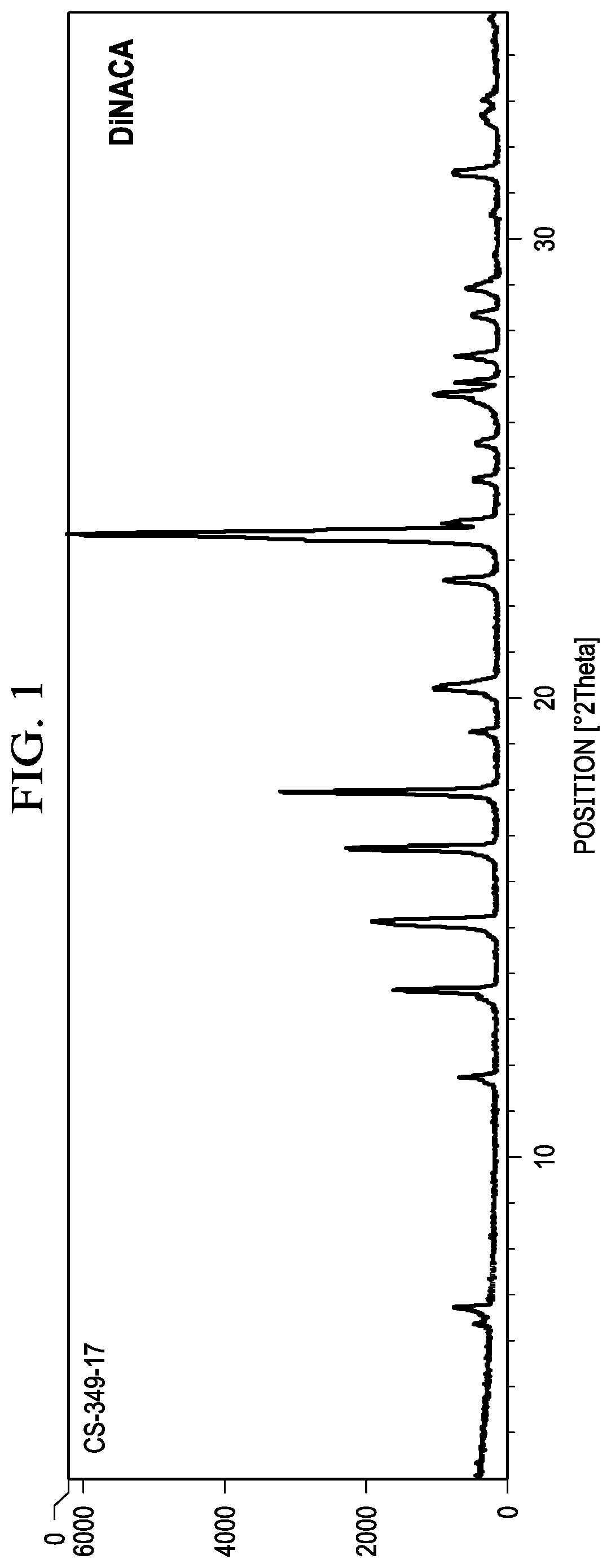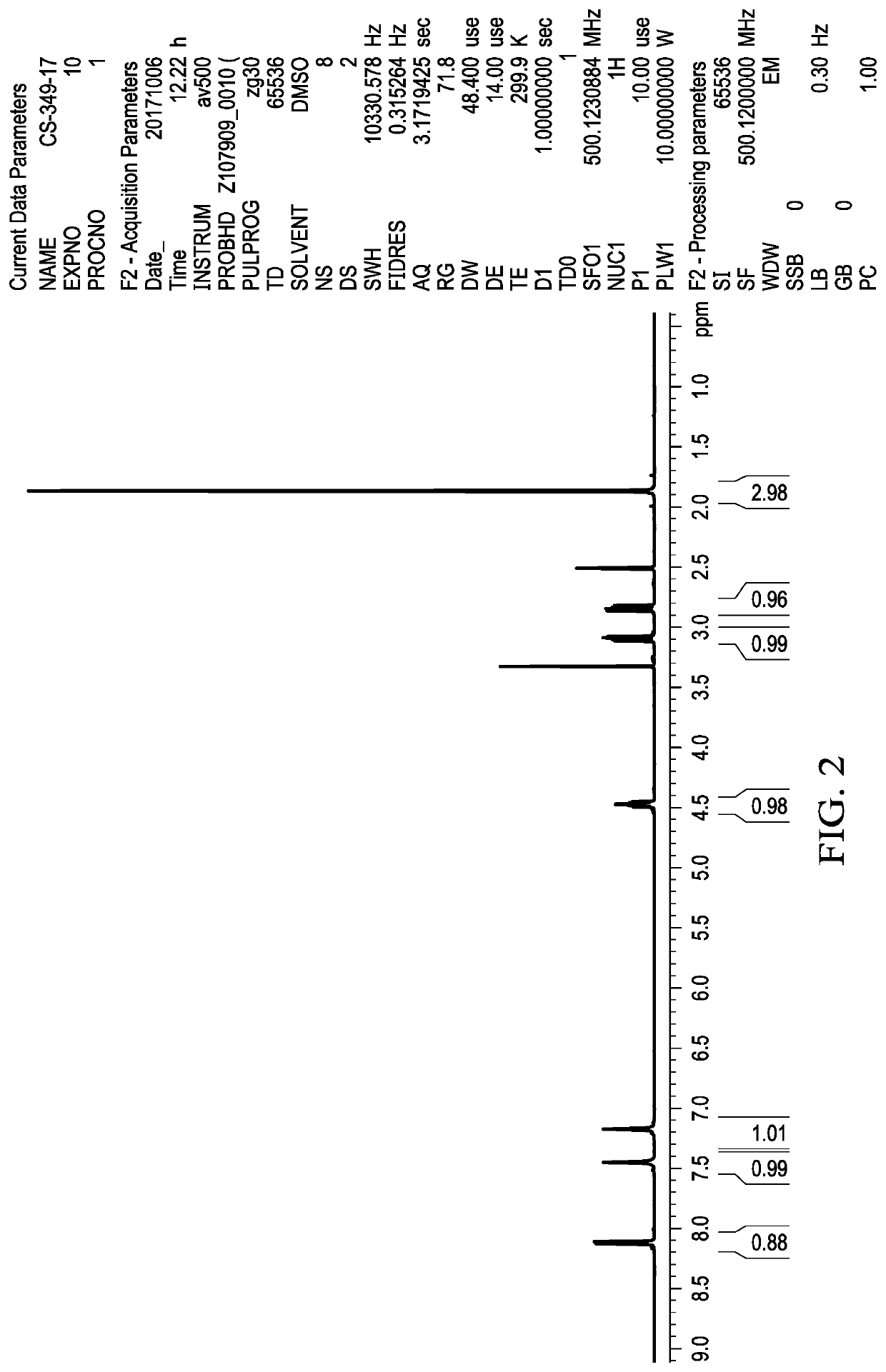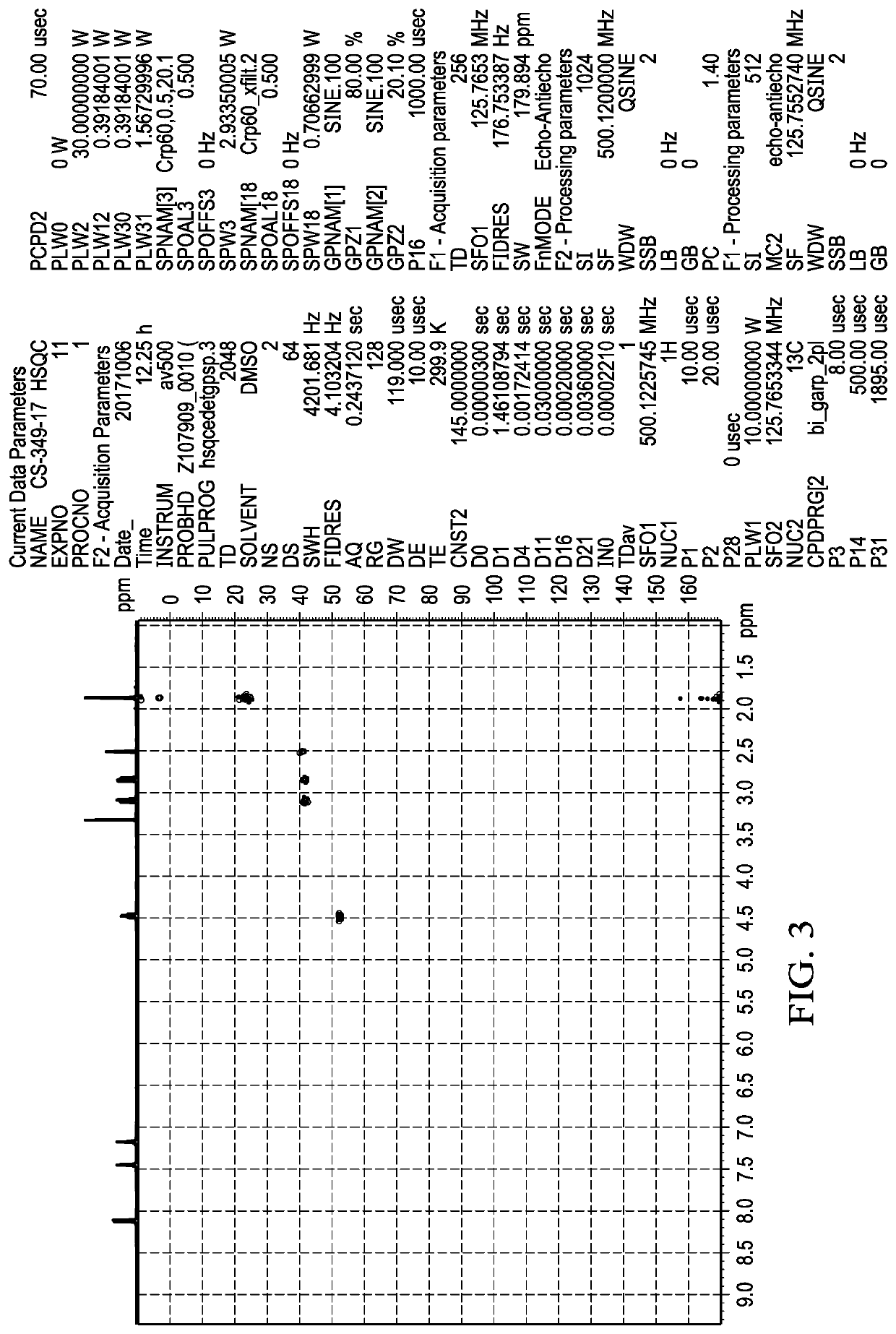Methods of Making Deuterium-Enriched N-acetylcysteine Amide (D-NACA) and (2R, 2R')-3,3'-Disulfanediyl BIS(2-Acetamidopropanamide) (DINACA) and Using D-NACA and DINACA to Treat Diseases Involving Oxidative Stress
a technology of n-acetylcysteine amide and d-naca, which is applied in the directions of anti-noxious agents, drug compositions, cardiovascular disorders, etc., can solve the problems of reducing cellular function and eventually apoptosis, affecting the function, and constricting the visual field
- Summary
- Abstract
- Description
- Claims
- Application Information
AI Technical Summary
Benefits of technology
Problems solved by technology
Method used
Image
Examples
example 1
Ophthalmic Suspension
[0085]Sodium phosphate, propylene glycol, Pluronic F127, edetate disodium benzalkonium chloride are dissolved in 800 ml of water. The pH is adjusted with dilue HCl or NaOH. DiNACA is added. The osmolarity is within 250 to 350 mOsm Kg. Solution is q.s. with water to a total of 1 liter. The formulation is sterilized by autoclave. This is only one ophthalmic formulation and does not exclude other solution formulations.
ComponentQuantitydiNACA1 g to 100 gSodium phosphate0.8 gPropylene glycol 18 gPluronic F127 50 gEdetate disodium0.1 gBenzalkonium chloride0.1 g0.1N HCl or NaOHAdjust pH to 7.4Water for InjectionQ.S. 1000 ml
[0086]Compounds described herein can be provided in isolated or purified form. Isolated or purified compounds are a group of compounds that have been separated from their environment, such as from a crude reaction mixture if made in a laboratory setting or removed from their natural environment if naturally occurring. Examples of the purity of the is...
example 2
[0089]Preparation of NACA-d3. A process for preparing 10 mg of D3-N-acetyl cysteine amide 5 (NACA-d3) is described. The inventors used various approaches to make D3-N-acetyl cysteine amide by using the chemistry shown in Scheme 1. In each case, the inventors observed a mixture of compounds while forming the methyl ester 3 and LCMS suggests that several other compounds were made, including 4 in addition to the desired 3. Treatment of this mixture with ammonium hydroxide gave 6, with no observation of the desired 5 by LCMS.
[0090]Cysteine methyl ester 7 (Scheme 2) allows the elimination of the problematic transformation of 2 to 3. Acetylation affords 3 directly from 7 and then reaction with ammonium hydroxide provides the target compound 5.
Scale Yieid ReactionNotebook(g)(%)Comments1 to 21719-TTP-20.50N / A2 eq. of NaOH, 1 eq. anhydride. LCMS shows a mixture of 2 andbis-acetyl.2 to 31719-TTP-30.78N / ALCMS shows a mixture of 3 and 4.3 to 51719-TTP-40.38N / ALCMS shows a mass for 6.1 to 21719-...
PUM
| Property | Measurement | Unit |
|---|---|---|
| mol % | aaaaa | aaaaa |
| mol % | aaaaa | aaaaa |
| mol % | aaaaa | aaaaa |
Abstract
Description
Claims
Application Information
 Login to View More
Login to View More - R&D
- Intellectual Property
- Life Sciences
- Materials
- Tech Scout
- Unparalleled Data Quality
- Higher Quality Content
- 60% Fewer Hallucinations
Browse by: Latest US Patents, China's latest patents, Technical Efficacy Thesaurus, Application Domain, Technology Topic, Popular Technical Reports.
© 2025 PatSnap. All rights reserved.Legal|Privacy policy|Modern Slavery Act Transparency Statement|Sitemap|About US| Contact US: help@patsnap.com



